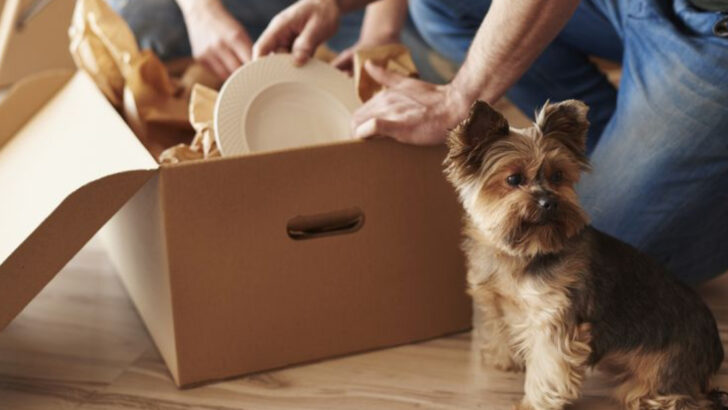Moving is chaos. Now imagine doing it with paws, tails, and whiskers in tow.
Boxes are stacking, routines are crumbling, and your pet has no idea what’s going on—only that something big is happening.
That’s when the anxiety kicks in. The hiding. The barking. The “What are you doing with my bed?” look.
But don’t worry—you can keep your move from turning into a total meltdown.
With a little planning and some clever tricks, you can help your furry sidekick stay calm, safe, and maybe even curious about their new digs.
Here are 14 tips to make moving day less stressful and a lot more pet-friendly.
Create a Safe Space Early
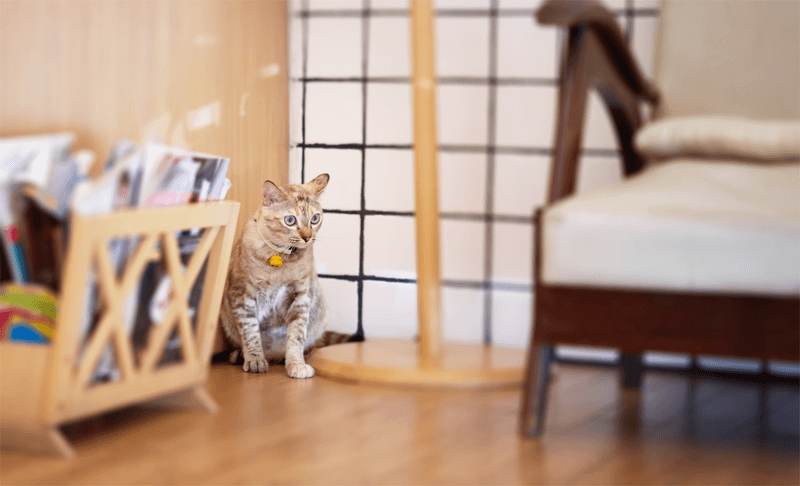
Before the moving day chaos begins, set up a calming sanctuary for your pet. Choose a quiet room with familiar toys and bedding, providing a comforting retreat. This helps minimize anxiety and gives your pet a sense of stability amidst the boxes and noise.
Consider playing soft music to mask the unsettling sounds of packing and moving. Establishing this space early allows your pet to adjust and feel secure during the upheaval. A soothing environment with recognizable scents can make all the difference for your furry friend.
Visit the Vet for a Checkup
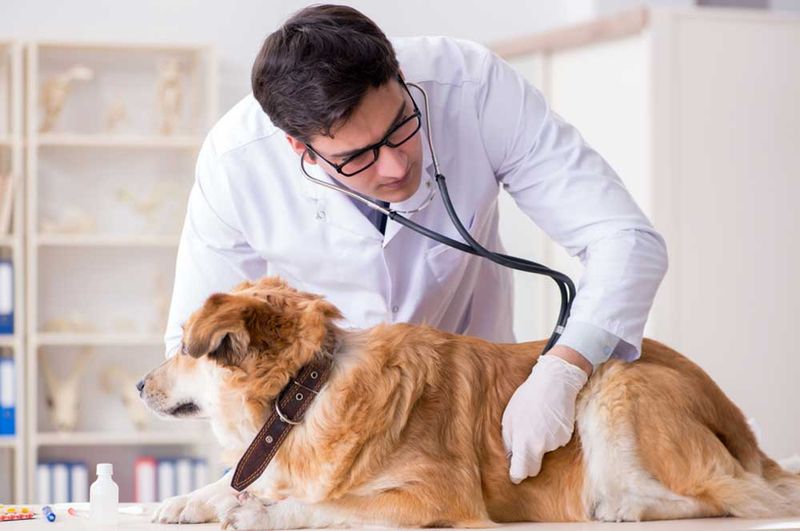
Scheduling a vet visit before moving is crucial. Ensure your pet is healthy and up-to-date on vaccinations. Discuss any concerns you might have about the move and get advice tailored to your pet’s needs.
The vet can provide tips on managing stress during travel or recommend calming products. Obtain a copy of medical records in case of emergencies. Knowing your pet’s health is in good hands can ease your mind during the relocation process.
Research Pet Regulations

Understanding pet regulations at your new destination is vital. Different states or countries might have unique requirements, such as quarantine or specific vaccinations.
Researching these rules ahead of time can prevent last-minute surprises and delays. Prepare all necessary documentation and ensure compliance with local laws. This proactive approach helps streamline the transition and protects your pet’s well-being.
Update Pet Identification

Updating your pet’s identification is a must before moving. Ensure tags and microchips reflect your new contact information to avoid potential mishaps.
In the event of separation during the move, having updated details increases the chances of a quick reunion. Consider temporary tags with both old and new addresses for added security. Keeping your pet’s ID current offers peace of mind during this transitional phase.
Gradual Packing Process

Instead of a last-minute rush, opt for a gradual packing strategy. Start weeks in advance, allowing your pet to adjust to the changes incrementally.
Leave out a few familiar items until the final days to provide continuity and comfort. A slow pace reduces anxiety and helps your pet acclimate to the evolving environment. This method fosters a more relaxed transition for everyone involved.
Introduce Travel Carrier Early
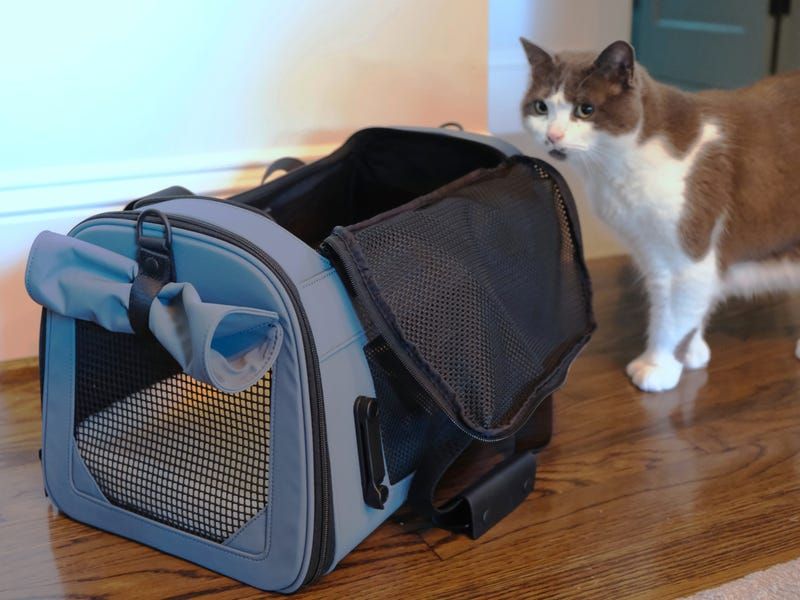
Introducing your pet to the travel carrier well before moving day eases travel-related stress. Make it a positive experience by encouraging your pet to explore the carrier freely.
Place favorite toys or treats inside to create positive associations. Gradual acclimation ensures that your pet feels secure and comfortable during transit. This proactive step can make a significant difference in their travel experience.
Plan for Pet-Friendly Accommodations

Finding pet-friendly accommodations is essential if you’re stopping overnight during the move. Research hotels or rentals in advance and confirm their pet policies.
A restful night’s sleep in a welcoming environment benefits both you and your pet. Look for amenities like pet beds or designated walking areas for added comfort. Proper planning ensures a smooth journey without unexpected hassles.
Pack a Pet Essentials Bag

Prepare a bag with essential items for your pet during the move. Include food, water, bowls, toys, and any necessary medications.
Having these items readily accessible reduces stress and ensures your pet’s comfort. Keep the bag within reach during transit to address any immediate needs. This preparation provides peace of mind, knowing you’re fully equipped for your pet’s care on the go.
Maintain Routine and Familiarity
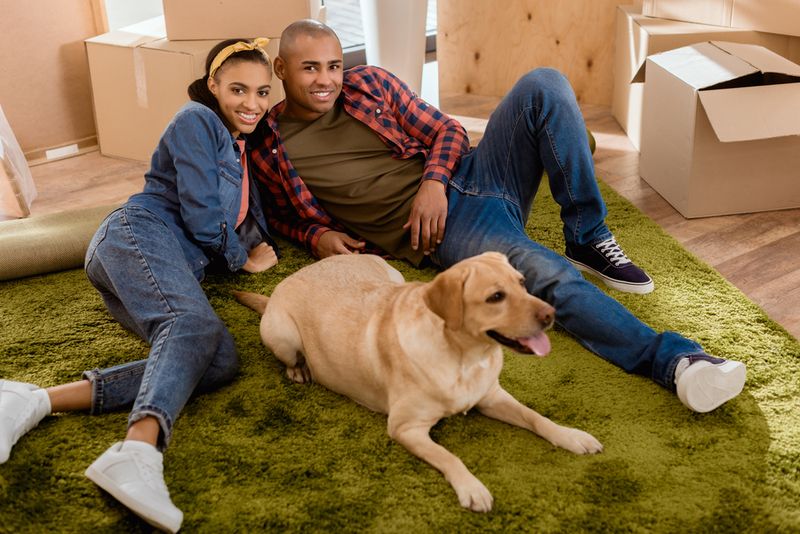
Maintaining a routine offers comfort and reassurance to your pet amidst the chaos of moving. Stick to regular feeding, walking, and play schedules as much as possible.
Familiarity in these daily rituals helps your pet feel grounded and secure. In times of change, a consistent routine acts as an anchor, reducing anxiety and promoting well-being.
Secure Your Pet During Transit

Safety during travel is paramount. Secure your pet in a travel crate or seat restraint to prevent accidents and ensure comfort.
A stable, well-ventilated carrier provides a sense of security and minimizes distraction for the driver. Prioritize your pet’s safety by choosing a suitable travel setup.
Prepare Your New Home

Before your pet arrives, prepare your new home with their needs in mind. Set up their bed, toys, and familiar items to create an inviting space.
Check for any potential hazards and pet-proof new areas. A welcoming environment eases the transition and helps your pet settle in more quickly.
Gradual Introduction to New Home

Introduce your pet to the new home gradually. Start with one room, allowing them to explore and become comfortable.
Slowly expand access to other areas as they adjust. This method reduces overwhelming sensations and fosters a smoother transition. Encouraging exploration helps your pet acclimate and feel at ease.
Monitor Pet Behavior
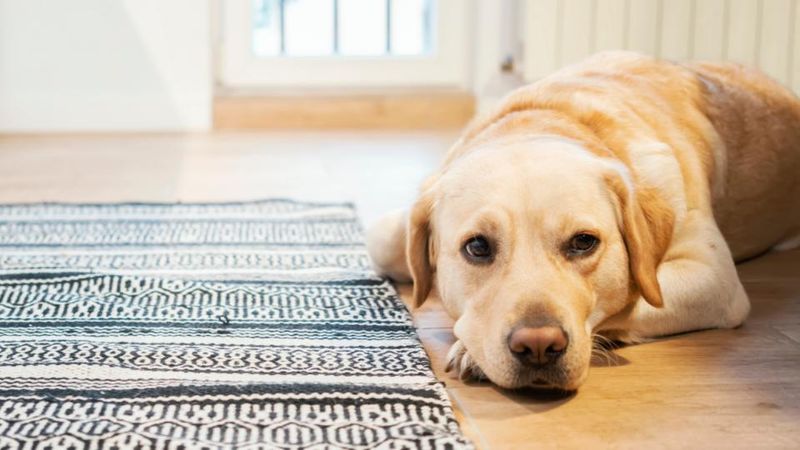
Post-move, keep an eye on your pet’s behavior for any signs of stress or anxiety. Changes in appetite, sleep, or activity levels can indicate adjustment difficulties.
Offer extra attention and affection to reassure them during this transition. Early intervention can prevent behavioral issues and ensures your pet’s well-being in the new environment.
Establish a New Veterinarian
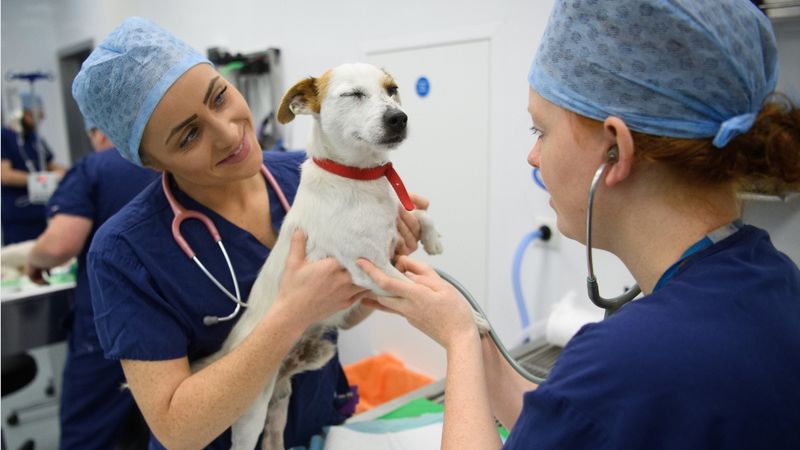
Finding a new veterinarian is crucial for ongoing pet health. Research local vets and schedule an introductory visit.
Building a relationship early ensures your pet’s medical needs are met promptly. A trusted vet offers peace of mind and reliable care in your new community.

